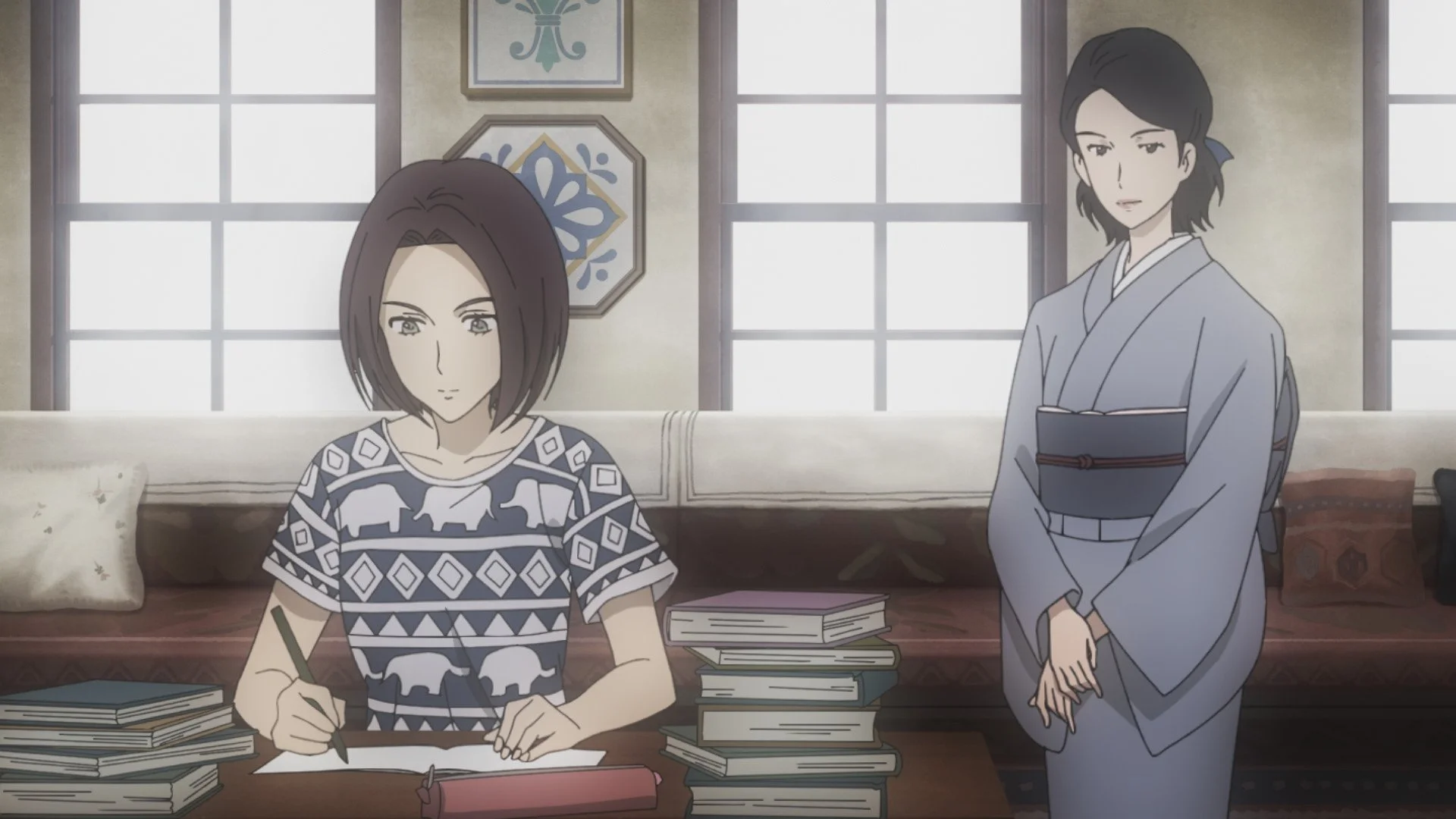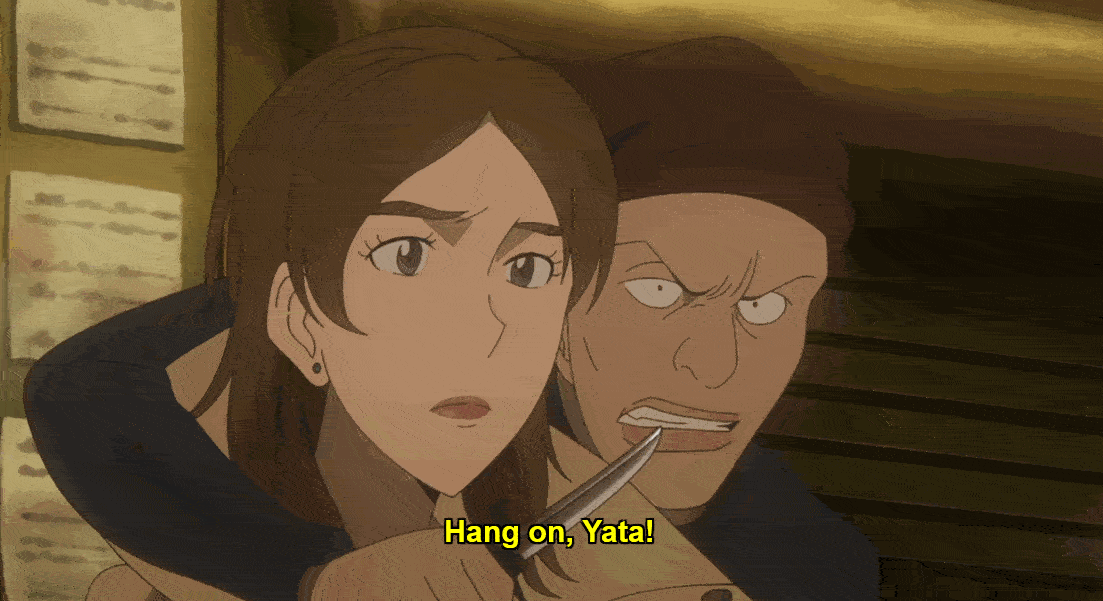Review: Part 6 “Episodes 18 and 19 ~ Fakes Attract Lies”
Welcome to our episode review of Lupin III: Part 6!
Our review is from the perspective of a “hardcore” Lupin III fan, who has seen every episode, film, and special the series has had to offer since its animated inception in 1969. The author's perspective on modern anime however, is lacking. When it comes to anime, we exclusively watch Lupin III, so cannot compare it to other shows on the market. Instead, we can only compare it with Lupin media of the past.
Be aware that there are SPOILERS ahead.
Please only read on if you either have seen the episode already, or do not mind learning about important character interactions and pivotal plot points in advance.
This review covers both episodes eighteen and nineteen. This is as each episode features as part of the same two-part storyline. Stay tuned until the end of the article, as we are excited to publish special correspondence from Agnew, a fan living in the real life version of Cotornica, the locale of which episode eighteen is set!
“Episodes 18 and 19 ~ Fakes Attract Lies: Part One and Two” of Lupin III: Part 6 make a brief return to the central plot line of the second act, in which Lupin is attempting to uncover the whereabouts of his surrogate mother, Tomoe.
His search brings him to the country of Cotornica, a fictional location based on Turkey. While there, our hero becomes tangled up in a blackmail case related to politician and aspiring leader Hazel, who, in an interview, mentions that she was tutored by a dignified lady wearing a kimono. While it feels like a bit of a stretch—Lupin takes the opportunity to confront Hazel, in an attempt to learn more about his past, and hopefully discover the whereabouts of his teacher.
While there, Lupin happens upon Mattea, who, seemingly by coincidence, is also taking a trip to Cotornica. Despite being in disguise, Lupin spends an afternoon with the young florist, and the relationship between the two starts to bloom. There is plenty of enjoyable cheeky banter, and unlike in earlier episodes, it feels as if Mattea comes into her own. The energy between the pair is great, and they get on a storm—even to the point of Mattea sticking up for the thief, and keeping his identity under wraps. It is a neat relationship, that feels no need to stray into the realm of things becoming sexual—a big positive, in my books.
Things quickly begin to escalate, as Hazel meets an untimely demise under the veil of night. Inspector Zenigata, who is at the scene in an attempt to trail Lupin’s movements, becomes framed for Hazel’s murder, and it is soon up to “Yata” and Arianna, the inspector’s assistants, to solve the case and bust him out.
Despite a confrontation with thugs and a brief interrogation scene with a paparazzo, the case resolves rather quickly. Although the killer is yet to be caught, Zenigata’s name is cleared—thanks to the due diligence of his trusty partners. Like with Lupin and Mattea, the relationship between “Yata” and Arianna matures, and it is great to see the pair finally get some decent screen-time. This then bleeds over into Inspector Zenigata, who, while often keeps gruff and quiet during investigations, admits that he needs to rely on his assistants more.
Before the two-parter wraps up, things take yet another turn. It becomes apparent that both Arianna and Mattea may have also been tutored by Tomoe, and that something else is at play. Arianna takes matters into her own hands, and decides to interview a plucky young Mattea, who chats with the officer over coffee and baklava. In a shocking twist, tensions start to run high, and Mattra is revealed to be a cold-blooded killer, as she pounces on Ari and strangles her, mid-meal.
Covered in blood and slumped in the hallway, Arianna hands Inspector Zenigata a recording of her notes on the case. As “Yata” calls for help, Ari instructs her superior to warn Lupin—a man whose life is now very much in danger from the wrath of the young flower girl.
In terms of the over-arching story, there is a lot to unpack after watching both episodes eighteen and nineteen. The narrative moves at quite a pace throughout, and due to the stop-start nature of Part 6’s pacing overall, it can feel rather overwhelming.
I felt as if the amount of people with connections to Lupin’s teacher, Tomoe, is a tad unrealistic. It feels as if every second person in the show is seemingly linked to the women—Mercedes, Mattea, Arianna, Hazel, and of course, Lupin himself. While we learn in episode eighteen that Tomoe has a child, we still do not know who, and are likely to find out during the series finale in March.
Personally, I am far more interested in finding out the reason as to why this information is surfacing now, at this point in the franchise. All of a sudden, everyone seems to be talking about Tomoe, and coming out of the woodwork to discuss her whereabouts. Could this be something to do with the letter that Mercedes received at the start of the second act? I am curious to find out.
Keeping with the characters—the partial absence of Jigen, Goemon and Fujiko throughout both episodes gave the side cast some time to shine.
I appreciated the light romantic content between “Yata” and Arianna, and felt grateful for the writers giving the pair time in the spotlight. While it felt rather out of place, seeing “Yata” fight off hoodlums to protect Arianna, only for her later to reject his pledge to look after her and remain a strong, capable women in her own right, was enlightening. The two are well-written characters, if a little generic, but it is a shame Ari’s speech on wishing to look after herself quickly shifted into her bleeding out on the floor, only to be picked up by her colleagues.
Speaking of the finale—this was a twist I did not see coming.
While I personally wished for bigger things for Mattea, as stated in our review of episode thirteen, I did not expect events to go the way they did.
Typically, in previous specials and films, new female leads have ending up falling for either Lupin himself, or his profession. Clarisse from The Castle of Cagliostro and Ami from Part 5 fell in love with him. Maki, from Eternal Mermaid, wanted to be a thief. Mattea is unique, and better for it.
I genuinely feel some fear for Lupin, as for once, it appears as if he may not know Mattea’s true intentions, and what she really is. Someone else has the jump on him, and things could go wrong, fast. The pair’s banter towards the start of episode eighteen likely lured our thief into a false sense of security, and not only that, he saved her life in episode thirteen. It is unlikely he knows the once innocent flower shop owner’s true intentions, and I’m hooked on finding out how the inevitable confrontation between the two will pan out.
Unfortunately, we may only have two more episodes to go for these things to play out, and it feels as if the writers have a lot of ground to cover in just forty-ish minutes. Still, after the abysmal feud between Lupin and Holmes, the story of act two has been compelling enough to keep me interested, and I have higher hopes for its finale than I did the ending of the first act.
Before we end, I have to mention the elephant in the room—the animation.
If you are an avid reader of my reviews, hearing this will not come as a surprise to you (and thanks for reading, by the way)! I do not like the presentation of Part 6, and these two episodes were rough.
The chase sequence in episode eighteen, where Lupin and Mattea hop on a skateboard to the sound of Samba Temperado, is perhaps one of the worst action scenes in the series to date. It looks terrible, with Lupin shaking around on the skateboard like an old man, and an off-model looking Mattea shrieking while riding in his arms. Everything comes to a halt in around twenty seconds, as both the pair and the scene fall flat on their face. It seems almost as if the animators felt scared to commit to the sequence, and bailed as quickly as they could.
In episode nineteen, we have the fight sequence between “Yata”, Arianna and the street thugs.
With the Inspector behind bars, this felt like it could have been “Yata”’s moment, but the scene became riddled with poor animation, and I just could not look past it.
Arianna’s gun shots are fired off-screen, and backgrounds are covered up with speed lines, in an attempt to cut corners. It felt like the content I, a fan of “Yata”’s character, craved, but the production staff did not care enough to even animate him a decent punch.
Taking a step back and remembering how both Part 4 and Part 5 looked at the time of initial broadcast reminds me that things were not always perfect, but that does not mean I should not expect better here.
I can only hope things are touched up for the home video release—however, I am doubtful they will be able to save this one. At times, it just does not look like Lupin, and this saddens me.
Despite the messy presentation, Fakes Attract Lies is a good ride if you find yourself invested in Part 6’s second act.
There may be a few too many co-incidences going on, in regard to everyone’s relationships with Tomoe, but I am interested in seeing what this all leads up to. As mentioned earlier, the twist with Mattea is welcome, and I genuinely fear for Lupin’s safety—something I could rarely say, since he always seems to be one step ahead of his opponents.
The young florist is transforming into a fun, messed up villain. I feel that perhaps posing as the sort of character Lupin has come to trust in previous series, specials, and films, will let his guard down and work to her advantage. Risa Shimizu, the character’s voice actress, also does an incredible job at transforming her line delivery during the final scene, making the atmosphere feel chilling and tense.
This is clever writing, and I hope it sticks the landing.
After episode eighteen aired, I was fortunate enough to receive some correspondence from Agnew, a Lupin III fan living in Turkey.
Agnew was kind enough to share with us his thoughts on the cultural representation of Turkey within Lupin III: Part 6, which I am proud to publish below. Please have a read of it, and feel free to share any of your own thoughts in the comments.
Please note that the below thoughts were provided after episode eighteen first aired on television, but prior to the broadcast of episode nineteen.
Hey all, I’m DisembodiedAgew, but you can call me Agnew.
Episode 18 of Part 6, takes the gang to the nation of Cotornica, where Lupin continues to unravel the mystery of his former teacher. However, while watching the episode, I realized that this fake country was a stand-in for a real one - my very own Turkey! So I asked Mr. Lupin Central for a spot to place my thoughts, and here we are. I will be examining the episode from a cultural standpoint, and how good the episode is at capturing the essence of Turkey.
TLDR: It's just okay…
This most recent interpretation of a non-Western, non-Japan country is fine enough but lacks some of the nuance often given to other countries. When Lupin visited Italy in Part 4, it truly felt like the writers were trying to infuse Italian culture into the show. Granted, the entire Part took place there, but there are plenty of little things that could be added to present Turkey better. If Lupin loves Fiats so much, why not add some Fiat Egeas to inhibit the roads? If Jigen loves hard liquor so much, why not serve some Turkish rakı? If Goemon loves slicing things so much, let him slice some sucuk (a bit of a stretch, but you get my point)? With a bit more polish and care, this episode could have had a detailed, captivating, and truly meaningful environment.
This isn’t to say that there aren’t good details. The cafes Lupin and Mattea visit seem pulled straight from Turkey, and the dishes they are served in the restaurant are also authentic (and two tourists visiting an obvious tourist trap called “Kebab Party” is also rather on point). The Airport interior as seen at the end is needlessly large and empty, just like the real Istanbul Airport, and Zenigata seems to be drinking something loosely based on the yogurt beverage Ayran (The bottle is labeled “Günlük Süt,” which translates into “Daily Milk,” which doesn’t mean anything in particular).
The line “And I figured I might never get the chance if I kept waiting for the situation to get better” really hits home, as nearly identical lines have been said by several of my friends travelling to Turkey. But the fact that I had to hear the name “Selim” to make the connection between Lupin and real life goes to show that this wasn’t a particularly good representation. When I first heard Lupin mention Kebab, I just assumed that they were in bootleg Germany/Western Europe, and Lupin was referring to a hypothetical Turkish population.
Lupin has taken strides to be more progressive as of late, and it will pay off. Cultural representation in Lupin is certainly improving, with several countries receiving more detailed worldbuilding to be more captivating settings. Lupin has a habit of being rather, shall we say, objectionable. Several episodes from Part 2 come to mind, and Part 5’s Kingdom of Padar still baffles me in more ways than can be listed. It seems, however, that Lupin is taking steps in the right direction, and I for one cannot wait to see how Lupin continues to tackle other countries (hopefully with their real names).












